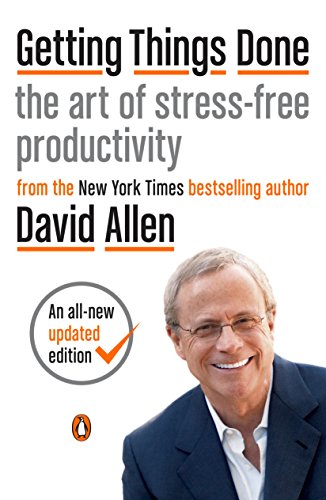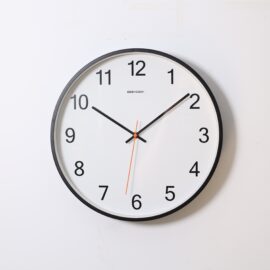

This article is an excerpt from the Shortform summary of "Getting Things Done" by David Allen. Shortform has the world's best summaries of books you should be reading.
Like this article? Sign up for a free trial here .
Are you interested in setting yourself up for success with the best organizational system? Are you wondering how to get started?
Setting yourself up for success isn’t easy. Just getting started requires planning skills and patience. But with the Getting Things Done system, setting yourself up for success is stress-free and effective.
Setting Yourself Up for Success With Life-Changing Habits
How do you set yourself up for success in the GTD system? Defining a next action goes hand-in-hand with identifying and envisioning the outcome you want to achieve: If you don’t know where you’re going, you can’t decide how to get there. The Getting Things Done program helps you determine both the outcomes you want via projects and how to achieve them via next actions.
Identifying projects and next actions brings clarity, accountability, productivity, and empowerment. You define the outcome you want, determine who’s involved in making it happen, create momentum that contributes to achieving this outcome, and take on ownership of making this dream a reality and setting yourself up for success.
Setting Yourself Up for Success: Indecision Turns to Action
When you have the opportunity to tackle things on your to-do list, one of the biggest roadblocks to productivity is not having next actions already defined. So if that happens, how do you set yourself up for success?
Why do so many smart, successful people delay working on projects until they’re pushing the deadline? Intelligent, creative, and sensitive people tend to procrastinate the most because when they look at a task like “do taxes,” their imaginative minds conjure worst-case-scenario images.
If you’re not in the habit of defining next actions, your whole to-do list becomes overwhelming. When that happens, it’s tempting to avoid it entirely.
Instead, clarifying next actions turns seemingly daunting tasks into bite-sized actions you can easily complete and feel the thrill of success. Taking it a step further and categorizing next actions into context-specific lists removes yet another barrier to tackling your to-do list and feeling on top of the world.
Clarifying a next action usually only takes about 10 seconds, but on a Thursday afternoon when you have 15 minutes before your next meeting, you might not feel like you have the brainpower to figure out the next action for an item that says “get new tires.” On the other hand, seeing “search the web for a tire store” feels much more doable, and much more likely to help in setting yourself up for success.
The Benefits of Asking, “What’s Next?”
Too often, people come away from meetings or discussions knowing only that something generally needs to happen, but they have no clarity on the next action or who’s responsible for it. How do you set yourself up for success in that case?
Always decide the next action—and force that decision in group settings—to boost productivity by committing to progress from the start instead of waiting until you’re up against a deadline.
Besides increasing your chances of making progress on a task, there are several benefits to simply asking the question, “What happens next, and who’s responsible?”
First, the question brings clarity. When you decide the next action, you also have to decide whether it’s worth your time, energy, and resources. You must decide if you’re serious about making this happen, and if you know what you’re getting into.
Second, the question brings accountability. You know the next action; now who’s going to do it? Many companies’ collaborative cultures make it easy to avoid assigning responsibility or blame, but someone needs to be tasked with the action in order for it to get done.
Third, the question brings productivity. It’s harder to avoid doing a specifically defined action than a vague project. Plus, you’re going to get more done if you have a plan of attack for everything from the get-go, instead of consistently scrambling to finish projects before their deadlines.
Finally, the question brings empowerment. Asking what you need to do next gives you ownership and assumes that you have the power to make progress on a project. Furthermore, when you complete that action on your own time and of your own accord—instead of being forced under fire—you feel more in control and get a greater feeling of success from the accomplishment.
Applying GTD Principles to Organizations
The practices of the GTD system are equally applicable to organizations and can profoundly increase productivity and alter an organization’s culture from one of high stress and constantly putting out fires to one of efficient and productive problem-solving. This can help in setting yourself up for success.
Although you can’t force each individual to adopt new habits, you can offer training to educate them and support them in implementing the practices. Have people in the organization who have already mastered the methods to both support others and lead by example.
Small factors—including unfocused meetings and neglected in-trays—can lead to major slow-downs and backlogs in productivity. By the same token, implementing even some small aspects of the GTD system can produce significant results.
If you’re interested in setting yourself up for success, you’ve already taken the first step. Setting yourself up for success takes time, but you’ll be glad you did it with the Getting Things Done system.

———End of Preview———
Like what you just read? Read the rest of the world's best summary of David Allen's "Getting Things Done" at Shortform .
Here's what you'll find in our full Getting Things Done summary :
- Why you're disorganized and your to-do list is a mess
- The simple workflow you can do everyday to be more productive than ever
- How to take complicated projects and simplify them






